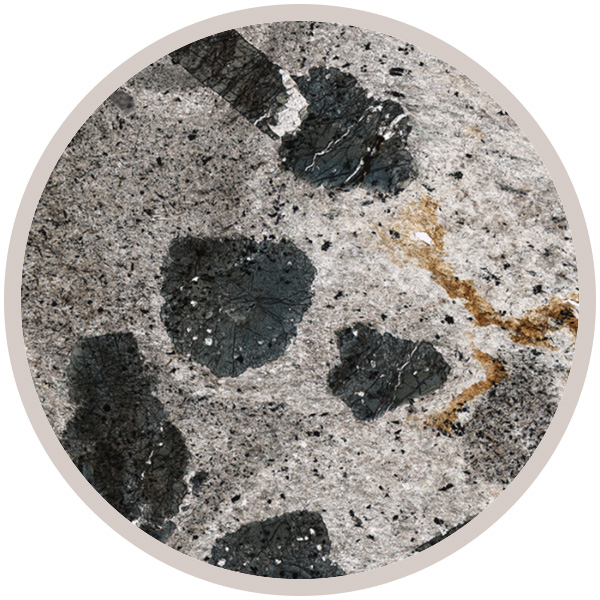
Fact sheet
This rock was deposited in the late Proterozoic period, probably as a series of silts and muds, before being subject to regional metamorphism in the Grampian orogeny. It now forms part of the Dalradian succession in Scotland within the chloritoid zone; Barrovian metamorphic zone (Barrow zones include chlorite-biotite-garnet-staurolite-kyanite-sillimanite). This samples comes from an area adjacent to The Craw, Catacoul bay, the Isle of Arran, Scotland.
The thin section illustrates the folded metasedimentary banding, with fine grained quartz, muscovite, and chlorite. Large porphyroblasts of chloritoid exhibit greenish brown/blue pleochroism, blocky shapes and poor cleavage. There are also books of chlorite visible at the edges of the chloritoid infilling pressure shadows. Chlorite exhibits green colours and and strong cleavage and between crossed polars it has anomalous blue/brown birefringence colours.
The United Kingdom Virtual Microscope (UKVM) collection consists of igneous, sedimentary and metamorphic rocks from around the UK.
It is intended as a teaching resource, helping to tell the story of the common rock types and how they form, and reflecting the history of the UK at the margins of the continent of Europe. The collection is a series of teaching sets, for example igneous rocks from the North Atlantic Igneous Province and SW England; high-temperature metamorphic rocks from Scotland and low-temperature metamorphic rocks from Wales; and sedimentary rocks, including English limestones and sandstones.





